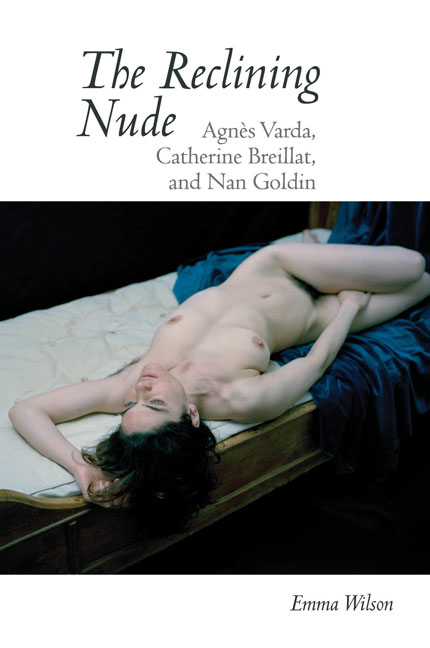shoreline
Summary
At Land (Maya Deren, 1946) opens with shots of the sea. In the surge of liquid a woman's body is visible. There is the sensual curve of her dark dress, and the line of her neck. Her cool pale skin, the sheen of the cloth, the salt water offer a stretch of sensations. In a cascade of shots, the film cuts to her shoulders, her long neck, a reclining head. The sweep of the camera shows the rush of water over her body, how her image is deformed in the flow, how the form dissolves in the waves. Her body re-emerges. Her head is cast back, the water rinsing through her long hair. Her mouth is open in rapture. The image seems at first one of drowning. Her body recedes and returns in the frame, moved in the water, her flesh unworldly, morbid, and fragile. The sequence effects a metamorphosis, a sleight of hand. She is there, alive, born. The sea recedes before the film cuts to the woman on the shore. Her eyes are open. Her dark pupils are peculiarly animate.
A following image shows her lying, reclining, her head cast back, her arm outstretched, the life of the sea behind her. The camera is close. The stillness and scale of the shots reveal her newness, her bliss. There are differently angled images of her face and of her body, as her form is unfixed. Her face is seen from a different angle, from above, on fine shingle. Her mouth is closed, her pupils move. She is watching and the film cuts to birds against the open sky. She closes and opens her eyes. She turns as she gets up and makes her way, feline, into the dream scenarios of the film.
At Land, a 14-minute film, was Maya Deren's third after Meshes of the Afternoon (1943) and Witch's Cradle (1944). The filming was by cinematographer Hella Heyman. Deren herself plays the woman in the water. In her essay, ‘Adventures in Creative Film-Making’, Deren says of the woman she plays: ‘She is not drowned; rather, the scene implies a birth or passage from one element into another’ (2005, 183). Her ‘girl’ is confronted with ‘a volatile and relentless metamorphosis’ (126). Deren says of her own films: ‘They are certainly not documentaries. Or rather, they are documentaries of the interior’ (97).
- Type
- Chapter
- Information
- The Reclining NudeAgnès Varda, Catherine Breillat, and Nan Goldin, pp. 1 - 2Publisher: Liverpool University PressPrint publication year: 2019

